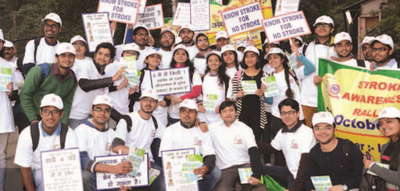Telephone becomes the Doctor
Telephone becomes the Doctor
The challenge
Lahaul and Spiti - the names create a vision of majestic mountains, lofty passes and far-flung villages. Of a harsh and lonely winter and heavy snowfall making places and people inaccessible for days and months on end. But, people stay in these villages, and it becomes the duty of the Government to ensure quality essential health care to all the inhabitants of these far-flung Districts.
Due to the paucity of doctors, specialists and even paramedics in these areas, the Government has found it difficult to extend the medical facilities to the local population. Helicopter sorties to airlift critical patients to Kullu or Shimla are undertaken for special cases but are not scalable solutions.
The solution
The State Health Department and the State National Health Mission (NHM) partnered with Apollo Hospitals to address this challenge and ensure quality treatment to the residents of Lahaul and Spiti. Apollo was chosen because of its proven expertise in providing healthcare through its medical expertise, clinical excellence and technology innovations.
Objectives:
- Create a conducive health environment in remote areas
- Provide the required health care support system
- Stabilisation of emergency cases before movement to larger hospitals
- Create a community level self-sufficiency in health care
Implementation
Based on a need assessment study, a comprehensive plan was drawn up and objectives laid out.Need assessment provided the information on local health problems and prevalent disease conditions.The data threw up the fact that diseases of the respiratory system, heart diseases and road accident injuries were the most common health hazards. Local skill sets were tapped and enhanced with appropriate training in health care to create a community support system. While physicians at the Apollo Main hospitals provide emergency services at the centre, local doctors under the guidance of the emergency physician did the task of stabilising the patient. This method also helped in reducing the skill gap for local doctors as they learnt from experienced emergency specialists.
The 15 month proof of concept pilot threw up amazing results in areas of Teleconsultations, Tele-emergency services, Tele laboratory services and Tele Cervical Cancer Screening services. From the management of outbreaks, reduced morbidity and mortality to laboratory tests using Point of Care Testing (POCT) devices, all parameters have shown a healthy move for the better.

Transparency of the services is available to the concerned authorities through call logs of the patients on a cloud framework. In addition to these, auditable monthly reports are submitted to the Government officials which provide all crucial information of these services. National Health Systems Resource Centre, New Delhi has recognised it as a ‘Good, Replicable and Innovative practice’.
For the people of this remote area, distance and geography are no longer barriers to having quality healthcare at their doorsteps.
Outcome
The ICT enabled Telemedicine services has increased the efficiency of output and effectiveness of outcome significantly. The key components of this success are:-
- Trained staff at the Tele Health Centre
- Utilisation of Digital and Point of Care Testing (POCT) devices
- Uninterrupted Internet connectivity
- Electronically generated patient request
- Electronic Medical Record
Last Modified : 2/20/2020
This topic provides information about National Ada...
This topic provides information about Atal Jyoti ...
This topic provides information about Green Skill ...
This content provides information about the Green ...
